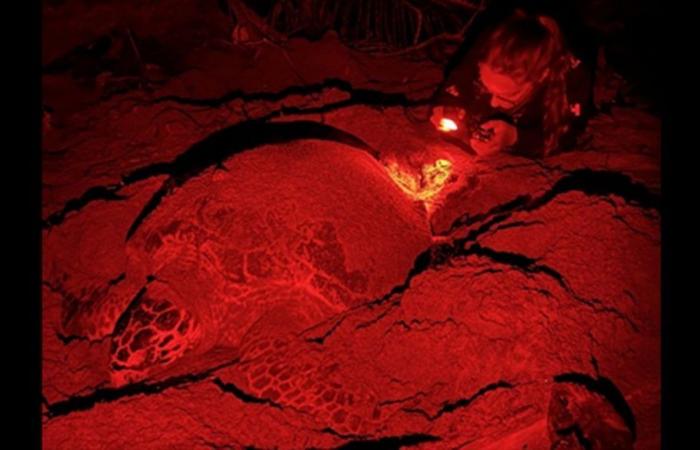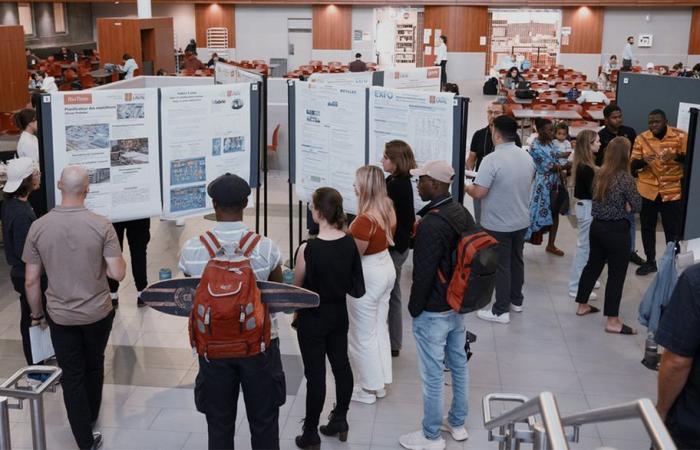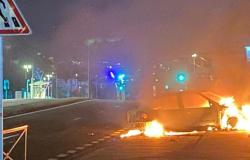For two weeks, an unusual bustle has reigned in the atrium of the Alexandre-Vachon pavilion. The cause of this influx is the presentation, until October 17, of some 850 posters on as many professional internships carried out this summer by students from the Faculty of Science and Engineering (FSG). In total, approximately 1,100 students registered in one of the 23 baccalaureate programs offered by the FSG had an intern experience. One of them was Laurianne Bazinet. Registered for a bachelor’s degree in biology, she spent three months in Martinique documenting the laying of sea turtles and the success of hatchlings emerging from the nest.
“My fieldwork took place from May to August on Diamant beach,” she explains. We did four nocturnal monitorings per week and observed leatherback turtles and hawksbill turtles, females coming out of the water at night looking for a place in the sand to dig a nest deep enough to then lay eggs. their eggs. The males remained in the water. If they do this at night, it is to be less vulnerable to predators. This is all the more important because turtles, when they are ready to lay eggs, fall into a sort of daze. They are no longer really aware of what is happening around them.”
To be able to count the eggs which fell one by one into a nest, Laurianne Bazinet had her face a few centimeters from the animal’s cloaca. Meanwhile, another researcher took photos of the two profiles and the top of the turtle’s head. Because they are protected, the two species of sea turtles were always observed from a distance of 10 meters, except during nesting. Red light lamps illuminated the area to reduce the risk of disturbing the turtles.
“I made 237 observations and saw 66 documented clutches when I was present,” she says. I also witnessed the exit of the nest of 80 newborns who headed towards the sea. It’s a truly incredible spectacle, like in the films.”
The student completed her internship at the Aquasearch design office in Rivière-Salée.
A drone as a working tool
Hugo Bellemare-Vallières is enrolled in the baccalaureate in computer science. From mid-May to mid-August, he completed an internship at the Boreal Robotics Laboratory at Laval University. His task consisted, initially, of taking more than 10,000 photos using a drone in 7 regions of Quebec, notably Outaouais and Gaspésie. The forest harvest areas flown over all had the characteristic of having undergone cutting in recent years.
The drone used by Hugo Bellemare-Vallières this summer, flying over a site that has undergone logging in recent years.
“Most of the time, the photos were taken at an altitude varying between 3 and 5 meters,” explains the student. At first, I flew the drone at an altitude of 70 meters. We thought we would get good quality images. But we realized that we needed to fly lower for images precise enough for artificial intelligence (AI) to accurately identify the different tree species in the regeneration areas.”
The research project was supervised by the FORAC Forestry Research Consortium while funding came from the Quebec Ministry of Natural Resources and Forests.
Part of the intern’s task was to create an AI model that could accurately identify species. “I received good basic training in AI from the start,” he says. I followed training at the Intelligence and Data Institute at Laval University and I attended an online course at Stanford University.”
Several of the sites photographed by the drone were located in controlled exploitation zones. “They were very often small, isolated places,” emphasizes Hugo Bellemare-Vallières. The largest were 1 square kilometer. The smallest had an area of 400 to 500 square meters. I saw good differences between the sites. If the spot had been cut a year before, I wouldn’t see any regrowth. But after four years, some species had started to grow back a little. In total, the drone made it possible to identify 31 tree species with relatively good precision.”
A connection between theory and the world of work
Elisabeth Oudar is responsible for practical training in the Practical Internship Department of the FSG. According to her, the internships that are offered at the baccalaureate level serve to put into practice the knowledge and theory learned in class. “They also create a connection between the department, the training programs and the workplace,” she continues.
The poster presentation in the atrium of the Alexandre-Vachon pavilion. This summer, approximately 1,100 students registered in one of the 23 baccalaureate programs offered by the FSG had an internship experience.
During an internship, the student performs the same tasks as the employees. “Often,” she said, “they will replace those who are on leave.”
The practical training manager points out that poster presentations of internships have existed for around ten years at the FSG. According to her, the implementation of this activity represents a strong point for the University. “It was avant-garde,” she says. Over the years, we have replaced many individual oral presentations in class with posters. I would say we had 200 poster presentations in the past.”
Élisabeth Oudar adds that the aim of such presentations is to involve the department as much as possible. “The professor,” she explains, “even if he doesn’t evaluate, comes to see the presentation and ask questions. The student is far from presenting individually in class and writing an internship report.”
In this post-pandemic context, such an activity also aims to bring together FSG students, “so that they are not always teleworking and so that they can see what other students are doing,” she maintains. . The best part is networking.”







